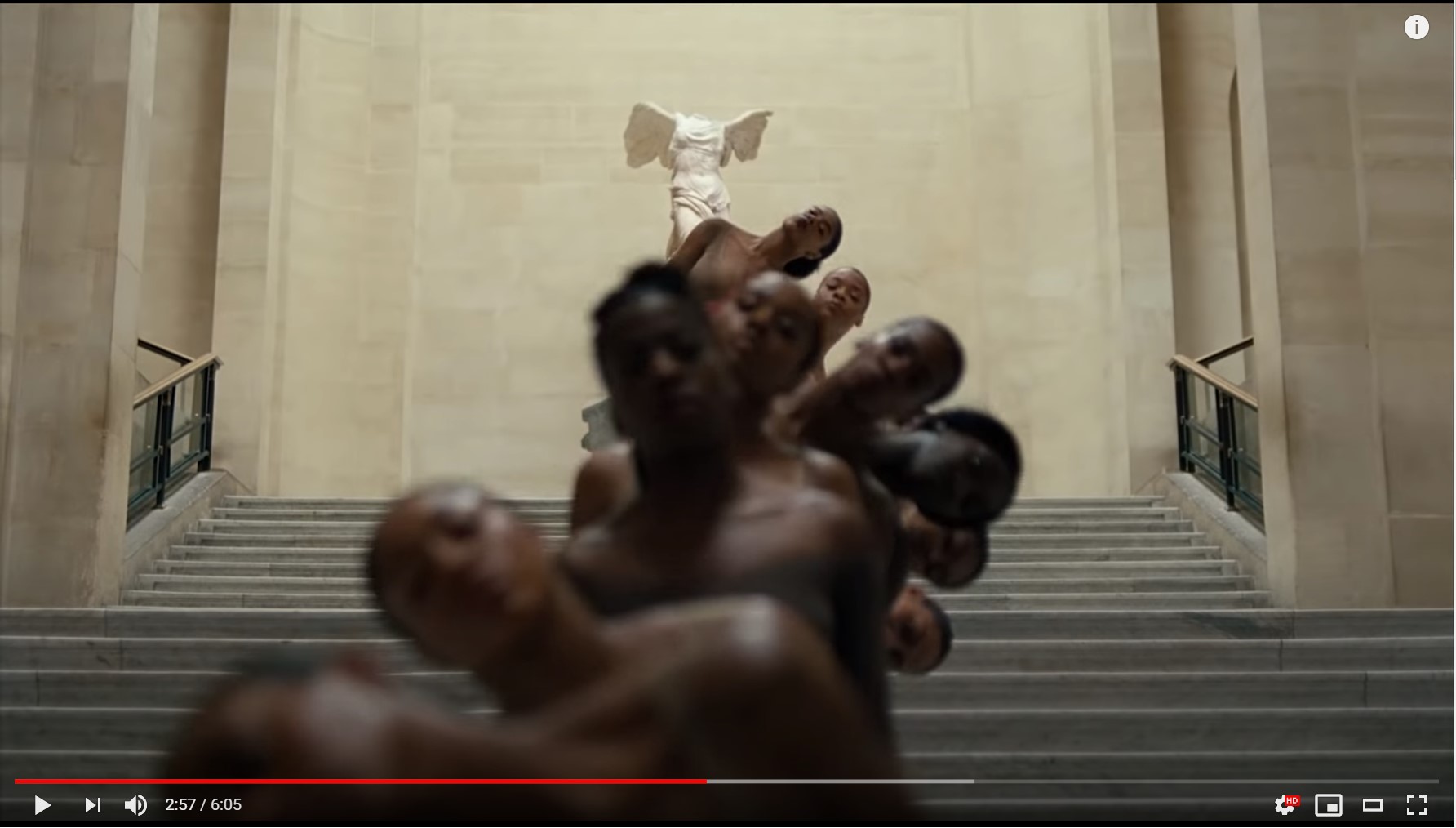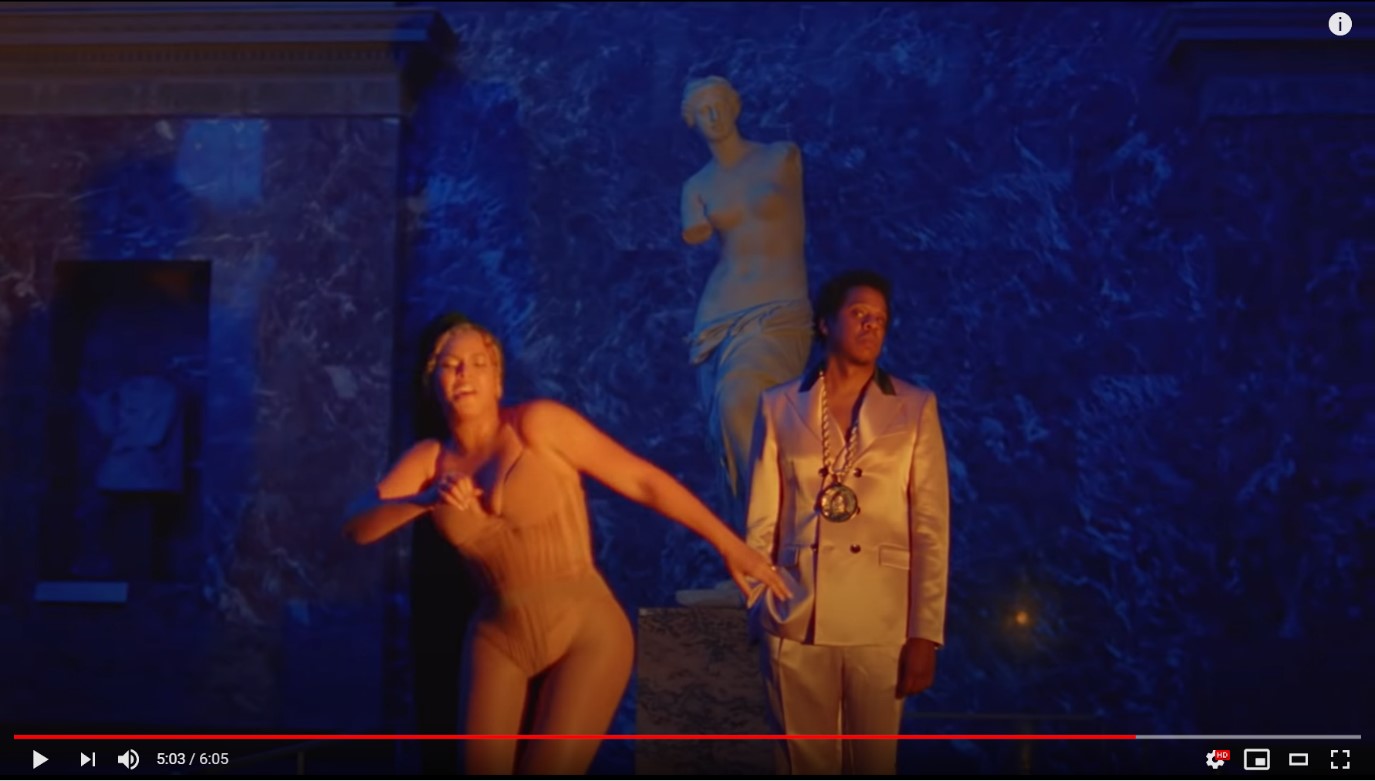Apes**t: Behind the Scene
Apes**t
Apes**t is a music by The Carters. It is famous for its wonderful and meaningful music video. What’s behind the scene?
Connotations and Denotations
To explicate the quote “Connotations parading as denotations”, it is necessary to examine the meaning of these three concepts first. Denotation, as the noun form of “denote”, is “the explicit or direct meaning of a word or expression” (Dictionary.com) –that is, the definition one finds in a dictionary, as the one I state here. A word’s or expression’s denotation does not alter with speakers of different backgrounds, experiences, or knowledge. Connotation of a word, on the other hand, might be interpreted differently by individuals because it refers to the associations connected to a word or the emotions and feelings related to that word. “Parading as”, in this context, means “showing up as”. In order to understand this quote, we need to focus on its subject: ideology. Sturken defines ideology as “the broad but indispensable, shared set of values and beliefs through which individuals live out their complex relations to a range of social structures” (Sturken 46), but he points out soon that ideologies “appear to be natural or given, rather than part of a system of belief that culture produces (Sturken 46, with my stress)”. Obviously, by obtaining consent with hegemony, ideologies show up as innocent, unhidden denoted meanings that pervade in people’s life.
In the MV
In the music video Apes**t by the Carters, Beyoncé and Jay-Z lead a tour into the Louvre in Paris, claiming the power of and justice for black people, and supporting Colin Kaepernick and Eric Reid for their kneeling during the anthem. The Louvre is the most famous representation of art, love, history, and power to the world for its abundant collection of art. At the same time, the Louvre also connotates power and leadership for its collection of art from the Napoleonic era and those snatched from other nations.
At the beginning and the end of the video, Beyoncé and Jay-Z look into the camera standing in front of Mona Lisa, they turn around, staring at the painting after glancing at each other. At least four kinds of “looking” happen here: Mona Lisa’s innocent, mysterious gaze, The Caters’ (rebellious? scornful?) gaze at the camera (or the audience), at the painting and at each other. Given the popularity of this best known, most-watched work of art, there is another looking happening here: the admiring gaze of the imaginary crowds of tourists. All these looking was woven together to create an image Beyoncé and Jay-Z intend to convey – while we are watching you, we need to be, should be, and have been seen.

The first scene I select is at 2:57 of the video, when the dancers are dancing on the stages in front of the sculpture of Winged Victory of Samothrace. The denotation of this scene is easily seen as the dancers swaying their heads in a line. The connotation of this scene is the advancement and the rise of power of black people over the years as they show all their heads in front of the headless goodness of victory Nike.

The second scene I select is at 5:03, when the duo poise in front of the Venus de Milo. While Beyoncé is imitating the S curve and waving her arms in front of the statue of love and beauty, Jay-Z stands still, gazing at her wife in meditation. The connotation of this scene is to highlight the beauty of black women. With this iconic work of art that symbolizes European beauty standards as the background, Beyoncé’s pose and performance reveal the undeniable beauty of black females and challenges the conventional standard of beauty.
While I agree with Lucia’s analysis that the video emphasizes black splendor, it is hard not to notice the wealth splendor connotated consciously or unconsciously in the video. Beyoncé and Jay-Z are not “any” black people; they are wealthy black people who are financially capable of renting the whole museum for performance for whatever goals. It is not only a celebration of colored people’s victory but more importantly, a celebration of the capital’s victory.
All blog follow CC BY-SA 4.0 licenses, please cite the creator when reprinting.